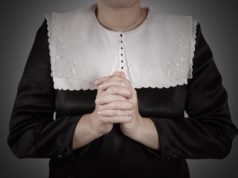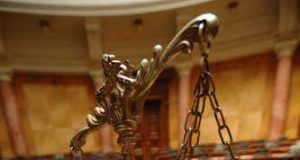
Introduction
The Church of England, the largest church in England, recently voted on a measure that would allow women to become bishops. Despite the majority being in support of the measure, it ultimately failed due to voting rules. Here’s what you need to know about the situation.
Background
The issue of female bishops has been a point of contention in the Church of England for decades. In 1994, the church began allowing women to be ordained as priests. However, the issue of women in leadership roles has remained a subject of intense debate.
The Vote
In a widely anticipated vote, the Church of England’s General Synod voted on the measure to allow women to become bishops. While a solid majority, including the Archbishop of Canterbury, voted in favor of the measure, it ultimately failed due to voting rules requiring a two-thirds majority from three different voting groups: bishops, clergy, and laity.
Reactions
Many supporters of the measure were disappointed by the outcome, calling it a missed opportunity for progress. Some argue that the Church of England risks becoming increasingly out of touch with modern attitudes and values. Others, however, maintain that the vote was not about agreeing or disagreeing with women bishops, but rather about the proper process for making such a fundamental change to the church’s structure.
What’s Next
Many within the church are calling for a reassessment of the voting rules, arguing that the two-thirds majority requirement is too high. Some are also urging the church to have a broader conversation about the role of women in the church and the importance of gender equality.
Conclusion
The failure of the measure to allow women to become bishops in the Church of England highlights the ongoing debates about gender roles and gender equality in institutions across the world. Despite the setback, it is clear that the issue will continue to be an important one for the church and for society as a whole, as attitudes and beliefs continue to evolve.
A widely anticipated vote on the status of women in England’s largest church left the status quo intact. Although a solid majority voted in favor of the measure allowing female bishops to serve the Church of England, the measure failed due to voting rules requiring a two-thirds majority from three different voting groups.
The Church of England, which has been an active force in Britain since it was first created by King Henry VIII in the 16th century, had few roles for women in its first several centuries. While women were permitted to be nuns, they could not join the clergy and were not allowed into any church leadership positions. The first women priests were allowed into the church in 1992.
Anglican churches, which are churches outside of England that descended from the Church of England, have been substantially more progressive about allowing women into their clergy and church leadership positions. Canadian, American, and Australian Anglican churches all allow for female bishops, and women have become increasingly common in these positions since first being allowed.
In order for the vote for female bishops to have passed, three different groups would have to approve the measure by a two-thirds vote—the laity (lay, or regular, people), the clergy (priests), and the bishop. While nearly 90 percent of the bishops and over 70 percent of the clergy voted in favor of allowing female bishops, the shortfall occurred in the laity. Just four more votes in favor of the measure from the lay voters would have changed the outcome of the election.
The vote was so close that some in England wondered if there could be a re-casting of ballots in the near future to see if any of the lay members might have changed their minds. However, church rules allow for these measures to be voted on only once every five years, so the next opportunity for allowing women to become bishops won’t come until late 2017.
Currently, only about two percent of people in the United Kingdom attend church services regularly, and the vote against women bishops has some in the church worried that attendance will now suffer even more.
Since 3 in 4 Britons approved of the measure to allow women bishops in public opinion polling, church leaders are concerned that the vote will make them appear to be out of touch in spite of the fact that bishops and clergy voted overwhelmingly for women. Both the outgoing and ingoing Archbishops of Canterbury are major proponents of the change, indicating that support within the Church of England for female bishops is strongest at the top.
The proposed new rule would still have allowed for some congregations to request a male bishop in order to oversee their female bishop if they considered themselves to be traditionalists. This compromise, however, was not enough to placate traditionalist elements among the laity.
While many expected for the female bishops measure to pass in 2012, few doubt that it will pass in 2017. “This is not an issue that is going to go away,” said the Archbishop of Canterbury after finding out the results of the vote.
Sources: bbc.co.uk, time.com
































